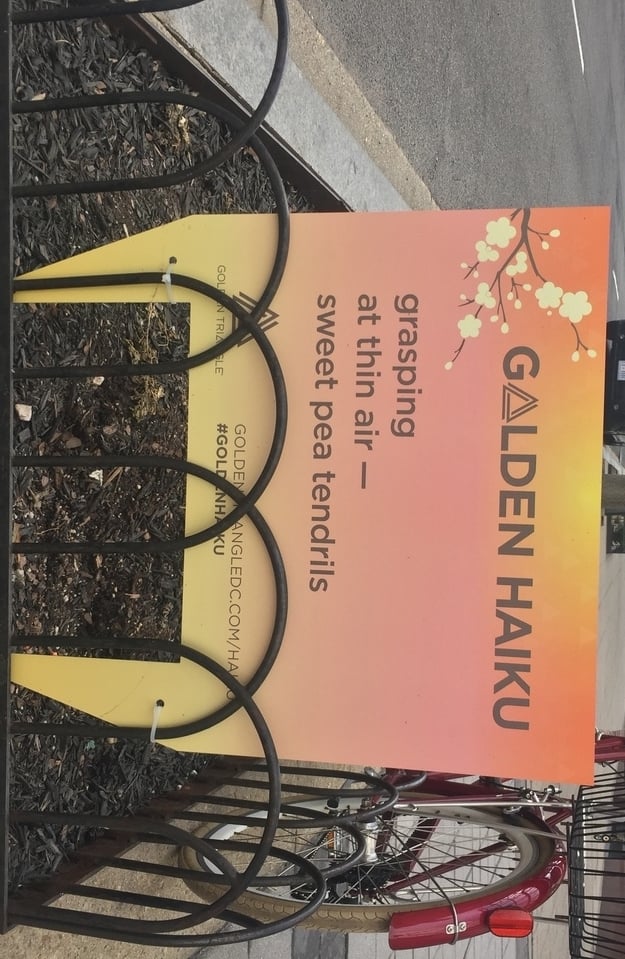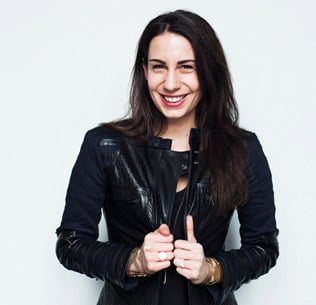Poetry, that neglected stepchild of the literary world, has fared worse than many of its siblings in the recent heathenization of the American public. Once a reason to gather ’round the fireplace and share an intellectual experience, poetry (and I say this from experience) is now the largest groan-maker in the American high-school classroom and a practically abandoned genre outside of it. Like so much in this once great nation of ours, poetry has been confined to the dust heap of history—i.e., three shelves in your local suburban Barnes & Noble and the constant misuse of Frost’s “The Road Not Taken” by hyper-optimistic Facebook meme creators.
So I applaud any efforts to rescue poetry from the ventilator that’s keeping it alive but barely communicative. New York’s MTA started its Poetry in Motion program—which displays poems on posters across various subway lines—in 1992 and then revived it in 2012; every time I glimpse some Emily Dickinson on the Subway I smile, and remind myself that she most likely would have loathed the subway, and then enjoy making a mental list of all the other things Dickinson would have detested about modern society. (For the curious, I think Dickinson would have loathed the following: Gucci’s Spring 2016 line, sandwich bread, and Tinder. She would have adored text messaging, Snuggies, and the wide availability of ramps.)
Now in its second year, our own local initiative—the Golden Triangle Haiku Contest—posted its “winning” haiku all across the neighborhood this week, dropping bits of joy for commuters to find while complaining that last week was too cold and this week was too hot, and doing its small part to defibrillate poetry back into a stable rhythm. They received over 900 entries, according to a spokesperson, and selected three winners, as well as 96 runners-up, all of whom are honored on the campaign-yard-sign-esque placards stuck into neighborhood flower beds.
There’s just one problem: most of these poems aren’t haiku.
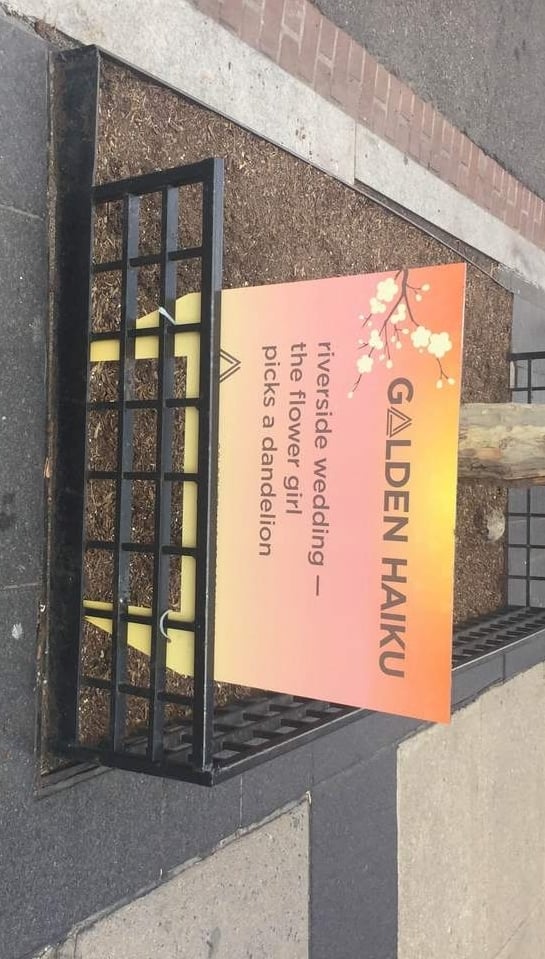
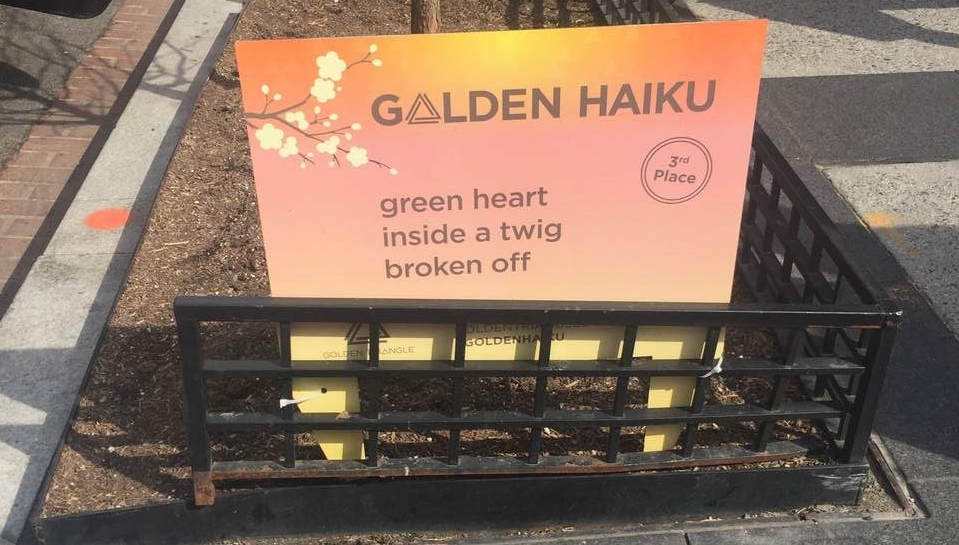
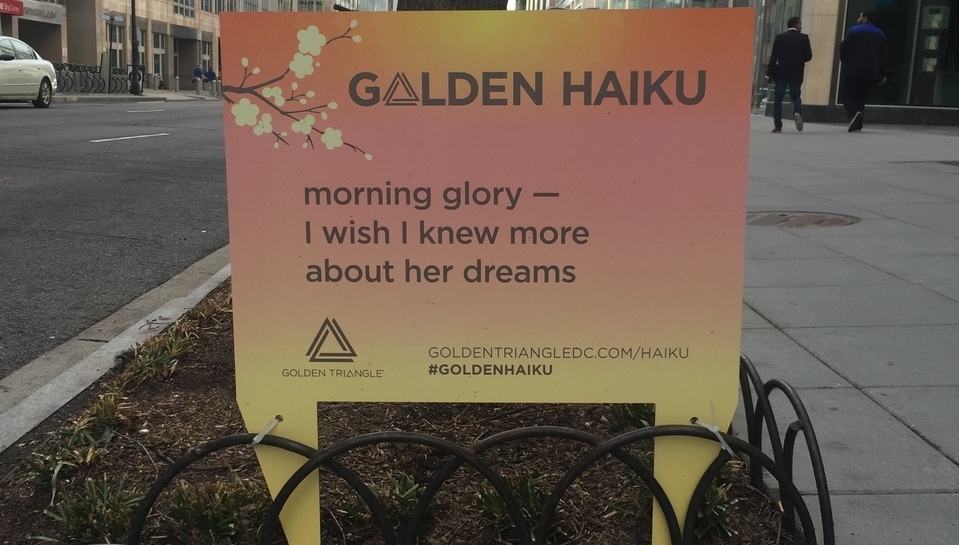
Before we go any further, it’s critical that we define what haiku actually is. In most cases, it’s a three-line poem of Japanese origin that follows the syllabic formula of 5/7/5. It often, though not always, discusses nature. And it includes a kirji, a “cutting word,” that creates some sort of juxtaposition inside the poem. Here’s a haiku to help you understand:
Haiku are poems
With subtle nods to nature
And shifts— longing!
— Hillary Kelly
Or
Those haiku posters
in the Golden Triangle
are not haiku — Sad!
— Benjamin Freed
Now, yes, I did just use the term “in most cases” to provide a little breathing room for the haiku. After all, the experts agree that haiku isn’t entirely limited to the 5/7/5 formula, and that freeform haiku, called jiyuritsu, mustn’t restrict itself to such old-school protocol. But those jiyuritsu represent a very small portion of the published haiku, and the Haiku Journal, arguably haiku’s leading publication, only accepts poems of the 5/7/5 ilk. The Haiku Committee has spoken it seems, and 5/7/5 is where it’s at.
But the Golden Triangle Haiku Contest has seemingly thrown all that to to the blowsy, dancing, purple poetic wind. An exhaustive hunt throughout the Golden Triangle—more commonly known as Downtown DC—has turned up a shocking figure: only three of of the 99 printed poems abide by traditional haiku rules. That’s, like, less than 3 percent. Three percent! As the Golden Triangle Business Improvement District’s representative explained to me via email, the only requirement was that “haiku should be spring-themed and three short lines, but do not need to adhere to 5-7-5 syllables.” Participants were directed to the Haiku Society of America’s website, which truly lets me down in its definition: “Most haiku in English consist of three unrhymed lines of seventeen or fewer syllables, with the middle line longest, though today’s poets use a variety of line lengths and arrangements.” Where are the standard bearers when you need them?
This is just a bridge too far for those of us who delight in the restraints that poetic form imposes upon content. After all, if the masses are told that a haiku can be virtually anything (although one-line poems were disqualified from this contest) why even use the term haiku? It’s clear that the literary landscape is collapsing in on itself and that we must prepare for the eventual certainty of a citizenry that stares confusedly at the scratches of ink on paper and wonders how to feel in the absence of accompanying emoji.
The good news is that my research turned up this rule-abiding gem that asks the question on all of our minds: Why the hell are lunch lines so ridiculous around here?
I just want some lunch.
Fast casual surrounds me.
Why’s the line so long?
— Kayla Anthony

